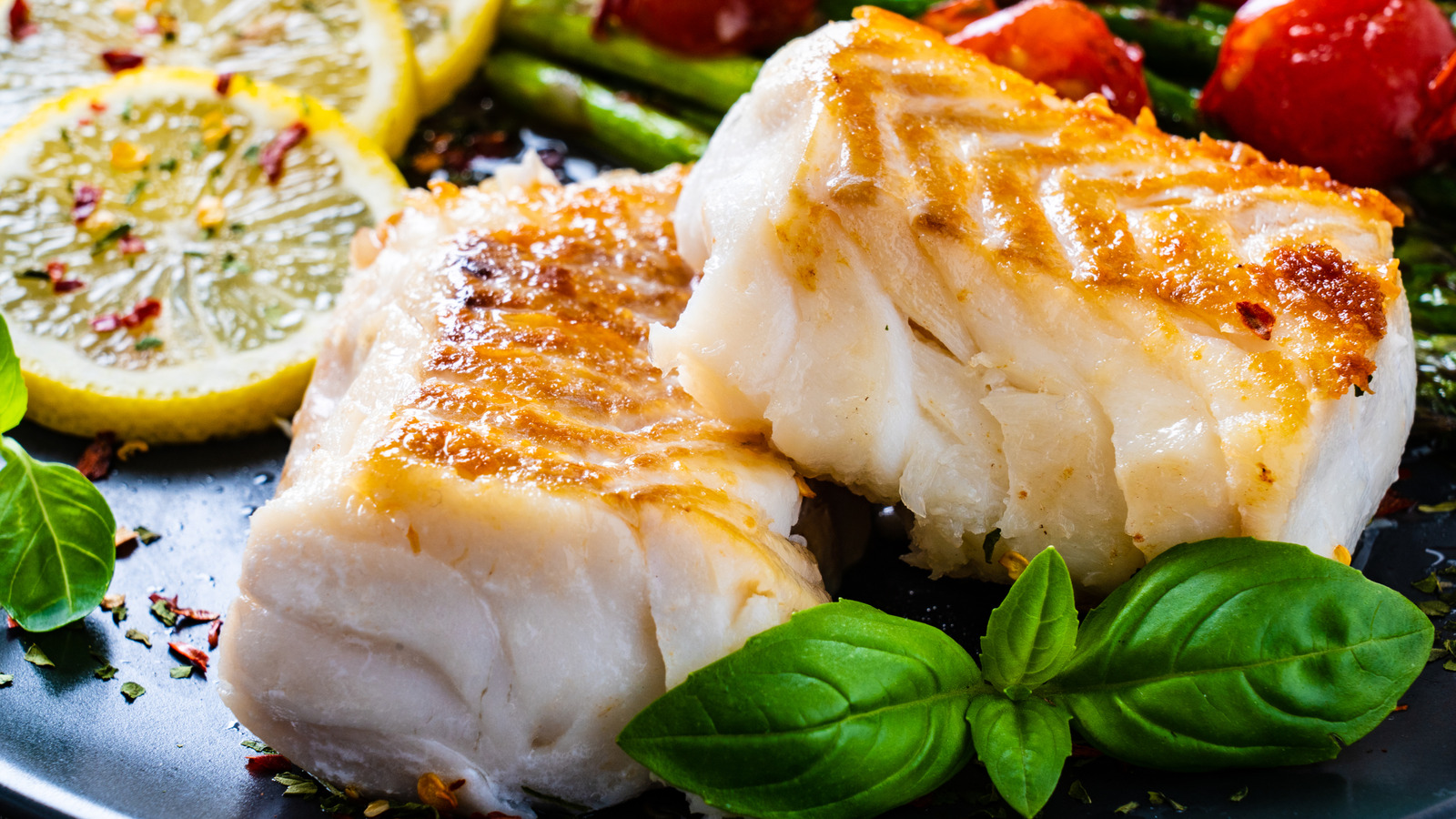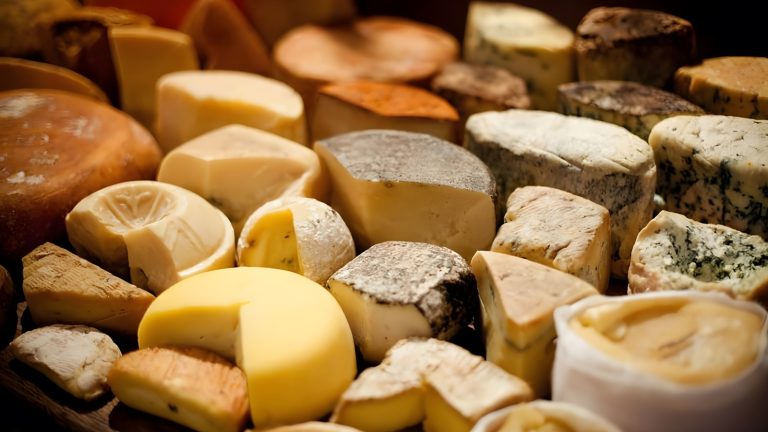We may receive a commission on purchases made from links.
Everyone loves cod. The mild white flesh lends itself equally well to fish and chips or a simple plate accompanied by rice and vegetables, and the price is usually decent to boot. Plus, says Rima Kleiner, the nutritionist behind Dish on Fish, “It’s meaty and holds together well during cooking, making it a versatile and easy-to-cook protein option.”
That said, many a mistake has ruined a good piece of cod, especially with a novice chef at the helm. (Guilty.) There are several general steps you can take to give your fish a better chance of coming out right. Fry in small batches, for instance, and try to avoid the cheapest cuts of fish. If possible, avoid Atlantic cod, which has been overfished and is therefore not sustainable.
In general, though, “Cod is not particularly hard to cook,” says Robert Smith, a private chef at Culinary Collective Atl. “It’s quite forgiving and versatile. Its mild flavor and flaky texture make it a favorite for many cooking methods, from baking to frying.” What other endorsement do you need? Now, all you need to do is to avoid those mistakes, and here are 12 of the most common and easiest ones to fix.
Buying low-quality fish
If you want to avoid a crummy final result, then you have to avoid a crummy primary ingredient. This is true for cod, any other type of fish, and really any food in general. So, first up, avoid the mistake of choosing low-quality or just plain bad fish, even if there is a major price difference. “Cod should be fresh, with firm flesh, a mild sea smell, and no discoloration,” Rima Kleiner says. “Opt for fish with clear, bright eyes if buying whole.” Always avoid fish that actually smells “fishy,” Robert Smith says. And if the fillets look cloudy, skip them, advises Julia Chebotar, a private chef at Health Chef Julia and Food Network’s “Chopped” Champion.
“Both fresh and high-quality frozen cod are equally good,” says Max Harvey, VP of Procurement at Wulf’s Fish. “Source cod (and any seafood) from a reputable fishmonger,” he adds. If you’re feeling adventurous, you can even buy fish cheeks, though you’ll probably have to talk to your fishmonger about where to find them.
As for frozen seafood, Rima Kleiner is all about it. “Frozen seafood is flash-frozen, making it the perfect protein to keep stocked in your freezer. When properly stored, seafood will last in your freezer for up to 6 months and you can take out as much or as little as you need.” Where possible, she says, stock up on cod or other seafood when it’s on sale. Just make sure when choosing your fish that it’s vacuum-sealed and free of frost or ice crystals, which can indicate that it thawed and was refrozen at some point on its journey.
Not thawing properly
As much as frozen cod is a great option to have in your freezer, you’ve got to take the right steps to thaw it. If you make a mistake during the thawing process, frozen fish can come out mushy or even unsafe for consumption. “For best results, defrost the fish overnight in the refrigerator,” Max Harvey says. “Slow defrosting in the cold of the fridge is best for the texture of the fish and food safety. Thawing at room temperature is a food safety risk.” Proper thawing also ensures even cooking, Robert Smith says, so whenever you have the time, it’s the right call.
To thaw in the fridge, put it on a plate or in a leak-proof bag and let it sit for 12-24 hours, Rima Kleiner instructs. The bigger it is, the longer it will take. Make sure it thaws completely before you use it, or the fish will cook unevenly. If you really don’t have that kind of time, Kleiner says, you can “seal the fish in an airtight bag and submerge it in a bowl of cold running water.” Cod typically takes about an hour or less to thaw out with this method, Kleiner adds. Never use hot water, she also warns, which can encourage the growth of bacteria and contaminate your fish.
When possible, the chefs agree, you should avoid microwaving, which affects the fish’s texture and usually doesn’t thaw it evenly. If that’s your only bet, though, you can use the defrost setting. “Check frequently to ensure the cod doesn’t begin to cook unevenly. This method is less ideal, as it may compromise texture,” Kleiner says.
Forgetting to dry it
Cod is delicious when it’s nice and crispy, but that doesn’t happen if you’re not careful during the prep period. Leaving your fillet too wet before cooking is, unfortunately, a common mistake. You’ve got to “pat dry very well with a paper towel to get a proper sear,” Julia Chebotar says. This also helps prevent steaming in the pan, Robert Smith adds. Although steamed cod is nice, if that’s what you’re going for, it’s not the right texture when you’re trying to pan-sear it. Cod, unsurprisingly, tends to retain excess water, which can impact the quality of the sear, says Rima Kleiner.
What’s more, Kleiner recommends that you pat it dry before seasoning it. You want that moisture removed before you add salt or flavorings to the fish, or you risk just wiping them off along with the water. “Proper drying also helps the seasoning stick better,” she says.
Not seasoning well
Bobby Flay never orders cod at restaurants. Why? Because, he says, it doesn’t taste like anything, so why would he pay for it? While not strictly true, as cod does have its own delicate briny taste, it is not a strongly flavorful fish, so you’ve got to give it a little help. In their fear of going overboard, underseasoning is a common mistake new chefs make. But, because absolutely nothing in life is ever easy, overseasoning is a problem as well.
First things first, make sure you add enough flavor. “Cod is mild,” Julia Chebotar says. “Don’t be afraid of salt, pepper, acid, and herbs.” Robert Smith agrees that “a bit of salt, pepper, and lemon can enhance its natural flavors.” But, he says, “Don’t overpower it with too many spices.” Your goal, Rima Kleiner says, is to enhance rather than mask the natural taste of the cod. Add just enough to prevent it from being boring, and make sure not to add it too early, she cautions. Salt draws moisture, so if you leave fillets sitting around crusted in salt, they’re going to dry out.
Handling fillets too roughly
Cod is not a sturdy fish the way salmon and tuna are, for instance. If you’re not careful, it will fall apart into flakes — a benefit, as long as you’re careful, but a drawback if you mishandle it. Therefore, you must take care to treat cod nicely at two points: when first dressing it to go into the pan, and when turning or flipping it.
Round handling is especially a mistake with fresh fillets, as they can bruise if you are too rough with them shortly after the fish is caught. Once it’s been put on ice or frozen, this is less of a danger, because the fish’s capillaries don’t release blood in the same way, but you still want to be careful to avoid making the fish mushy.
Once you begin cooking it, you should take even more care. “Cod breaks easily,” Julia Chebotar says. “Once down, leave it alone until it releases naturally.” Max Harvey agrees, advising you not to move it a lot when cooking, or it may fall apart. If you’re feeling intimidated, he says, “Cooking with a smaller fish is easier than cooking with a piece of a really big cod.” But either way, “Treat it with care.”
Choosing the wrong method for cooking
Another common mistake when cooking cod is to choose the wrong method. For instance, Max Harvey says it’s not the best one for the grill, because it’s delicate and can fall apart. It also doesn’t take a lot of dry heat, so don’t just throw it in the oven or under a broiler and eyeball it. Other than that, he says, “Cod is a very versatile fish that does well pan-fried, baked, or in soups.”
“Its mild flavor and firm texture make it an excellent choice for many cooking methods,” Rima Kleiner agrees. She adds steaming, breading, poaching, and even grilling to the list — as long as you’re careful. For instance, if it’s grilling season and you’re trying to keep the kitchen cool, you can technically grill cod on the barbecue, but you might want to try the foil packet method, which protects your fish from falling apart. Place the fillet on a piece of foil large enough to enclose the fish. Add butter and olive oil, garlic and lemon, and any fresh herbs and veggies you might like, then grill in the packet for between five and 10 minutes.
Pan-searing is another common and effective method, Robert Smith says. “It allows for a beautifully crispy exterior while keeping the inside moist and flaky. I season the fillets with salt, pepper, and a touch of lemon zest, then sear them in a hot skillet with a little olive oil until golden brown.” He likes to add a bit of butter and white wine at the end, which creates a simple, silky sauce right in the pan.
Failing to experiment with flavors
Although there are many basic ways to cook cod, it can take a lot more flavor than most would assume. Simply throwing it in a pan and searing it with a little salt is great, but why limit yourself? Julia Chebotar loves it pan-roasted in olive oil, with lemon zest, garlic, and fresh herbs. “I start it on the stovetop for a crisp sear and finish in the oven,” she says. “I also love pairing cod with a romesco sauce or a bright green salsa verde.”
As for Rima Kleiner, she loves sheet pan meals. “They are so easy for this busy mom of two!” she says. “Just throw some seafood, veggies, and herbs and/or seasonings on a pan, pop it all in a preheated oven, and voilà — you’ve got an amazing meal in minutes.” One of her fave flavor variations includes smashed tomatoes and feta. The tomatoes are cooked, along with fresh vegetables such as zucchini and broccoli, on the same pan as the fish in the oven. Once the tomatoes are ready to burst, she smashes them up to create a light sauce. Add some feta, olives, and lemon juice, and you basically have the Mediterranean Sea in a pan.
Max Harvey is also a fan of the one-pot meal simply because cod absorbs flavors so well. He pairs potatoes and veggies with wine or broth, along with aromatics. “Once you’ve developed flavor, add the fish and cover to cook,” he says. “You can serve right out of the pan with some crusty bread for a full meal.”
Using the wrong pan
The pan you use matters. “Avoid using a pan that doesn’t retain heat well, as this can lead to uneven cooking,” Robert Smith says. “A non-stick or cast-iron skillet is ideal for searing.” Rima Kleimer agrees, explaining, “Nonstick or well-seasoned pans work best for cooking cod, as its delicate texture makes it prone to sticking. Avoid cast iron unless it’s impeccably seasoned,” she adds.
You can also try a well-seasoned stainless steel pan, Julia Chebotar says. If you’re thinking to yourself, “Wait, a well-seasoned stainless steel pan?” you’re not alone. Most of us associate seasoning with cast iron, but in fact, you can season stainless steel such as the All-Clad D3 Stainless Steel Frying Pan as well. It just works a little differently, though you’re still polymerizing oil to make food less likely to stick. To do so, choose an oil with a high smoke point, spread it evenly across the bottom of the pan, heat it until it just begins to smoke, then remove and cool the pan. Lastly, you can wipe away the extra oil with a paper towel. This will wear away rather than build up as cast iron does, so repeat as necessary.
Make sure to preheat it to the recipe’s specifications before the fish goes into the pan to prevent sticking, steaming, or mushiness. Your spatula matters too, Kleiner says: “Use a fish spatula or flat-edged utensil to gently flip the fillet without breaking it.” The Zulay Kitchen Fish Spatula is a highly reviewed option if you’re in the market for one.
Skimping on the fat
Another common mistake when cooking cod? Not using enough fat, or using the wrong kind. “The type of cooking fat can significantly affect the flavor and texture of your cod,” Robert Smith says. “Olive oil is a popular choice for its flavor, but butter can add richness. Use enough fat to coat the bottom of your pan for searing to prevent sticking and promote an even crust.”
As for the amount, Smith says, 1 to 2 tablespoons should do it for your average pan of fillets. Julia Chebotar agrees that “Cod doesn’t need to swim in fat — but it does need that barrier to crisp up and stay moist.” Avocado and extra virgin olive oil are among her favorites, while oil and butter are Max Harvey’s go-tos. “Basting with extra butter during cooking adds even more flavor,” he says.
If you’re going to be using high-heat methods, Rima Kleiner cautions, make sure you use a fat that can stand up to it without altering or overpowering the flavor of the fish. “Neutral oils like canola or vegetable oil are perfect for higher-heat methods like frying, without overpowering the fish’s flavor.” She also likes clarified butter or ghee, which is “ideal for high-heat cooking, as it won’t burn as quickly as regular butter.” You can make your own ghee or buy it online. Options such as 4th & Heart Original Grass-Fed Ghee or 4th & Heart Himalayan Pink Salt Grass-Fed Ghee are highly reviewed and delicious.
Overcooking it
Overcooking cod is an easy mistake to commit. You have to understand its delicate texture, Julia Chebotar says. Because it is a lean and mild fish, it stays flaky and delicate throughout the cooking process and is easy to pair with both bold and subtle flavors. However, she warns that flakiness can work against you: “Too much heat or moisture, and it falls apart.” You should, therefore, pull it from the heat as soon as you see flaking appear, she says.
Rima Kleiner agrees that the low fat content makes it prone to drying out. Cook fish no more than two or three minutes per side, depending on its thickness. Use a reliable thermometer such as the ThermoPro TP03B Digital Meat Thermometer and take it off the heat as soon as it registers 145 degrees Farenheit, which should give you moist, perfectly done fish. Or, says Robert Smith, you can use the adage of 10 minutes per inch of thickness at moderate heat.
Max Harvey says there is one more way to tell when your fillet is ready: “When you see the fish pushing moisture out into the pan, it’s done.” Make sure to take it off the heat at this point. Even if it is simmering in a sauce, it will get tough once it starts to release its liquid. Remember, those are your juices, and you want to keep them inside the fish!
Not resting the fish
“It’s worth discussing the importance of resting your cod after cooking,” Robert Smith says. Essentially, the muscle fibers of meat and fish tighten during cooking, which makes them too taut to hold in juices. If you cut into the fish directly after pulling it from the heat, those liquids are free to run out, rather than staying locked inside the muscle fibers where you want them. It’s a mistake that can ruin even a perfectly cooked piece of fish. “Just like with meat, letting your fish rest for a few minutes allows the juices to redistribute, enhancing the flavor and keeping it moist.”
Plus, Julia Chebotar adds, “Like meat, it continues to cook slightly off heat and firms up, making it easier to plate without breaking.” Setting it aside for just a few minutes will lead to a firmer, moister, and all-around nicer piece of cod.
Serving with the wrong accompaniments
As with any other protein, you shouldn’t serve a hunk of cod on its own, no matter how well you cooked it. “Consider pairing your cod with complementary sides, such as roasted vegetables or a fresh salad, to make a well-rounded meal,” Robert Smith says. Something crunchy can work particularly well and add dimension, Julia Chebotar adds. Think fennel salad or crispy potatoes.
In the end, Max Harvey says, it’s really your choice what kinds of seasonings and sides move you. He just asks you to keep one thing in mind: “Cod is a mild fish, so if you want to punch up the flavor, do it with flavorful accompaniments.” And at the end of the day, he says there is no need to worry. “Cod is not that hard to work with, and fish cooking in general is fast and straightforward. Don’t overcomplicate your cooking, and you’ll be fine.”





